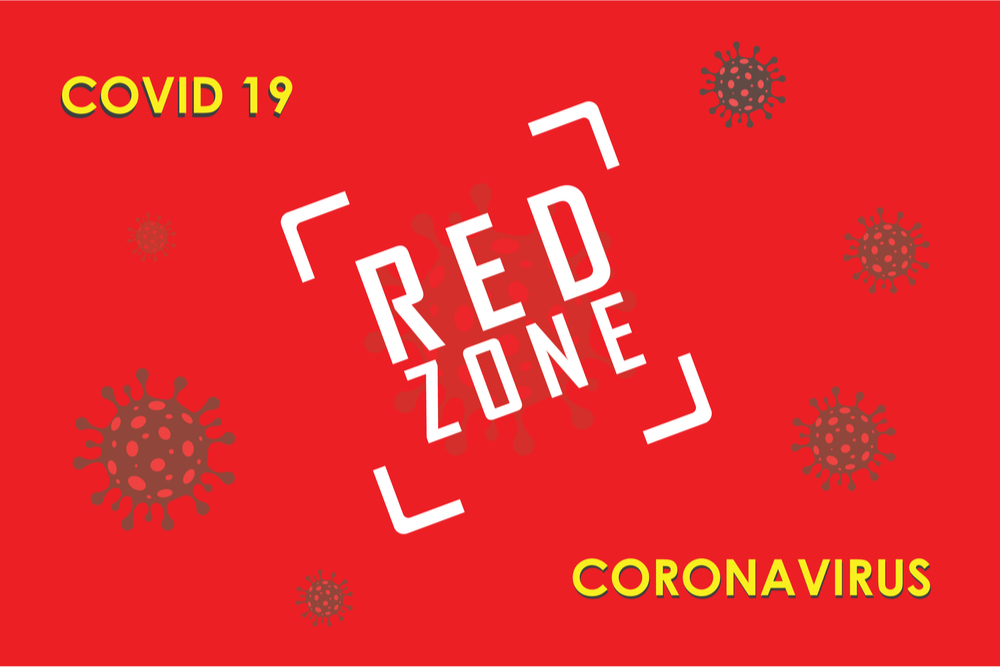The Center for Public Integrity yesterday published an internal White House report, dated July 14, that says that 18 states are in the “red zone” for COVID-19 cases — including Florida, Georgia and Alabama — and should enact stricter measures to slow the spread of the coronavirus, including telling residents to wear masks and shuttering bars and gyms.
Alabama has mandated face masks. Florida has not, and Georgia’s governor has forbidden cities and counties to mandate face coverings. Â Sort of the Three Little Pigs of COVID.
The Center for Public Integrity, an American nonprofit investigative journalism organization, said the report has been shared within the government but not posted publicly.
To be in the red zone for COVID-19 cases, a state had to have reported more than 100 new cases per 100,000 people last week. There are also 11 states in the red zone for test positivity, meaning more than 10 percent of coronavirus test results came back positive.
The Pensacola Metropolitan Statistical Area (MSA) – which is made up of Escambia and Santa Rosa counties- made the list of Florida metro areas in the red zone –so did Okaloosa County.
Summary for Florida
– Florida is in the red zone for cases, indicating more than 100 new cases per 100,000 population last week, and the red zone for test positivity, indicating a rate above 10%.
– Florida has seen an increase in new cases and an increase in testing positivity over the past week.
– The following three counties had the highest number of new cases over the past 3 weeks: 1. Miami-Dade County, 2. Broward County, and 3. Hillsborough County. These counties represent 40.7 percent of new cases in Florida. Florida is seeing broad community spread in many counties and metros.
– Florida had 308 new cases per 100,000 population in the past week, compared to a national average of 119 per 100,000.
Among the recommendations for the state:
Continue routine weekly testing of all workers in assisted living and long-term care facilities and require masks and social distancing for all visitors.
Mandate masks in all counties with rising test percent positivity. Multiple counties and metros are now in this category. Hint, hint: Escambia, Santa Rosa
Keep bars closed in all counties with rising test percent positivity, increase outdoor dining opportunities, decrease indoor dining to 25%, and limit social gatherings to 10 or fewer people.
Continue the scale-up of testing, moving to community-led neighborhood testing and working with local community groups to increase household testing of multigenerational households with clear guidance on test positive isolation procedures and mask use.
Ensure all individuals and households engaged in any multi-household July 4th activities are immediately tested, either in pools or as individuals.
Escambia, Santa Rosa
The Pensacola MSA (Escambia County and Santa Rosa counties) and Crestview-Fort Walton-Destin (Okaloosa County) made the Red Zone list for Florida.
Escambia County’s positivity rate for July is 12.7%; Santa Rosa 12.9%.
POLICY RECOMMENDATIONS FOR COUNTIES IN THE RED ZONE
Public Messaging
• Wear a mask at all times outside the home and maintain physical distance
• Limit social gatherings to 10 people or fewer
• Do not go to bars, nightclubs, or gyms
• Use take out or eat outdoors socially distanced
• Protect anyone with serious medical conditions at home by social distancing at home and using high levels of personal hygiene, including handwashing and cleaning surfaces
• Reduce your public interactions and activities to 25% of your normal activity
Public Officials
• Close bars and gyms, and create outdoor dining opportunities with pedestrian areas
• Limit social gatherings to 10 people or fewer
• Institute routine weekly testing of all workers in assisted living and long-term care facilities. Require masks for all staff and prohibit visitors
• Ensure that all business retailers and personal services require masks and can safely social distance
• Increase messaging on the risk of serious disease for individuals in all age groups with preexisting obesity, hypertension, and diabetes mellitus, and recommend to shelter in place
• Work with local community groups to provide targeted, tailored messaging to communities with high case rates, and increase community level testing
• Recruit more contact tracers as community outreach workers to ensure all cases are contacted and all positive households are individually tested within 24 hours
• Provide isolation facilities outside of households if COVID-positive individuals can’t quarantine successfully
Testing
• Move to community-led neighborhood testing and work with local community groups to increase access to testing
• Surge testing and contact tracing resources to neighborhoods and zip codes with highest case rates
• Diagnostic pooling: laboratories should use pooling of samples to increase testing access and reduce turnaround times to under 12 hours. Consider pools of 2-3 individuals in high incidence settings and 5:1 pools in setting where test positivity is under 10%
• Surveillance pooling: For family and cohabitating households, screen entire households in a single test by pooling specimens of all members into single collection device
